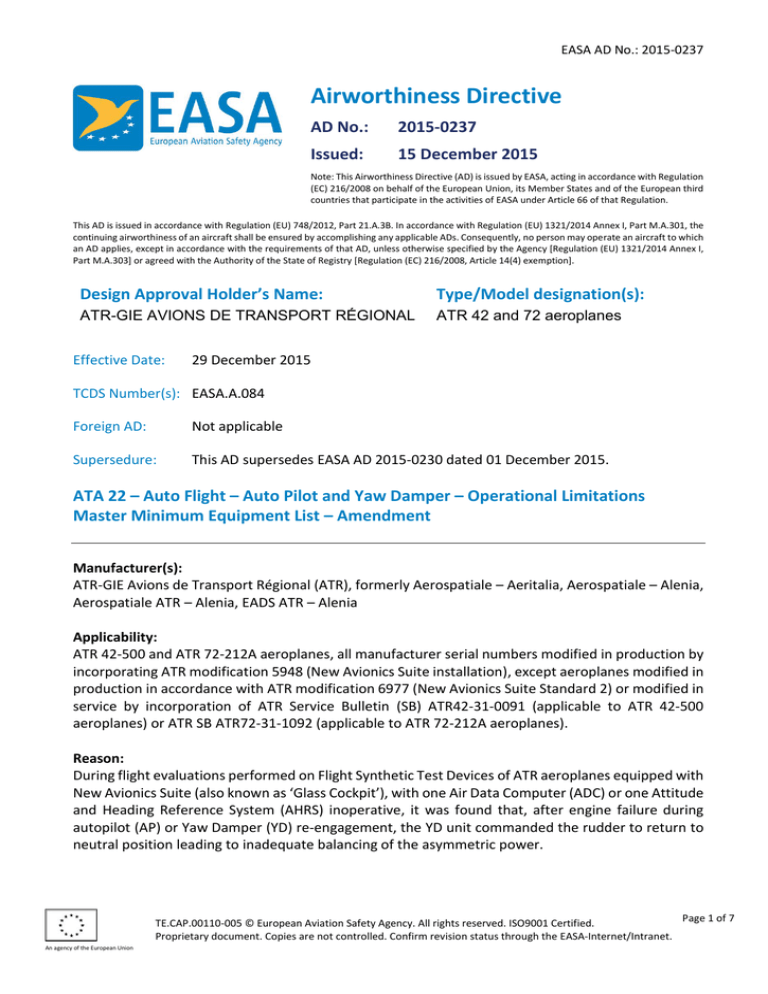
- AUTOPILOT ATA CHAPTER UPDATE
- AUTOPILOT ATA CHAPTER REGISTRATION
- AUTOPILOT ATA CHAPTER CODE
- AUTOPILOT ATA CHAPTER WINDOWS
AUTOPILOT ATA CHAPTER CODE
This code table was constructed by using the new JASC code four digit format, along with an abbreviated abbreviated code title. It was developed by the FAA’s, Regulatory Support Division (AFS-600).


1.1 Aircr Aircraf aftt Ge Gener neral al 1.2 Airframe Airframe system systemss 1.3 1.3 Stru Struct ctur uree 1.4 Prop Propell eller/ er/ro roto torr 1.5 1.5 Powe werr plan plantt The Joint Aircraft System/Component (JASC) Code Tables was a modified version of the Air Transport Association ciation of America America (ATA), (ATA), Specificati Specification on 100 code. While While the ATA 100 numbering system has been superseded, it continued to be widely used until it went out of date back in 2015, especially especially in documentation documentation for general for general aviation aircraft, on aircraft Fault Messages (for Post Flight Troubleshooting and Repair) and the electronic and printed manuals. The standard numbering system was published by the Air the Air Transport Association Association on June June 1, 1956. This commonality commonality permits greater ease of learning and understanding for pilots, aircraft maintenance technicians, pilots technicians, and engineers alike. If you have questions or comments for the Intune team, reply to this post or reach out to on Twitter.ATA 100 ATA 100 contains the reference to the ATA numbering system which was a common referenci referencing ng standard for all commercial commerc ial aircraf aircraftt documentation.
AUTOPILOT ATA CHAPTER WINDOWS
We will u pdate this post if we find additional Windows Autopilot scenarios affected by this change. There is no action needed beyond being aware of additional authentication prompts and potential timeouts during ESP app installations. In this scenario, the Windows Autopilot provisioning process will timeout if the user does not respond to the additional MFA prompts.
AUTOPILOT ATA CHAPTER UPDATE
However, with the above change, users will experience additional MFA prompts during the Autopilot provisioning process if there are Conditional Access policies (that require MFA) for apps installed during the Enrollment Status Page (ESP), or if an installation or update requires a device reboot. Previously, this initial MFA completion was sufficient for all subsequent scenarios where MFA was required. If you set the “Require Multi-Factor Authentication to register or join devices with Azure AD” option to “Yes”, Azure AD prompts users to complete MFA before joining or registering a device. How does this impact the Windows Autopilot customer experience?
AUTOPILOT ATA CHAPTER REGISTRATION
Going forward, the MFA claim is not preserved after registration and users will be prompted to redo MFA for any apps that require MFA by policy. Previously, if a user completed MFA as part of their device registration, the MFA claim was carried over to the user state after registration was complete. To provide greater security around MFA requirements, a change was made to the Azure AD authentication behavior during device registration.

This baseline security change can slightly modify the experience in the Autopilot enrollment flow in specific scenarios where you use MFA, have multiple applications that require reboot during the enrollment process, and have Conditional Access policies enabled. When attempting to retrieve access to a protected resource after a session has expired, the user will be prompted for MFA if there is a security policy that requires it. This change will not impact existing Azure AD-registered devices until their sessions have expired or become invalid. With this change, we no longer honor MFA that was completed during device registration after the user logs in to their device instead we will require the user to complete MFA once more before accessing an MFA-protected resource in Azure AD. To improve the baseline security for Azure Active Directory (Azure AD), we recently changed the Azure AD behavior for multi-factor authentication (MFA) that is completed during device registration. At Microsoft, we want to ensure that we are providing our customers with features that improve productivity and securely protect organizations.


 0 kommentar(er)
0 kommentar(er)
